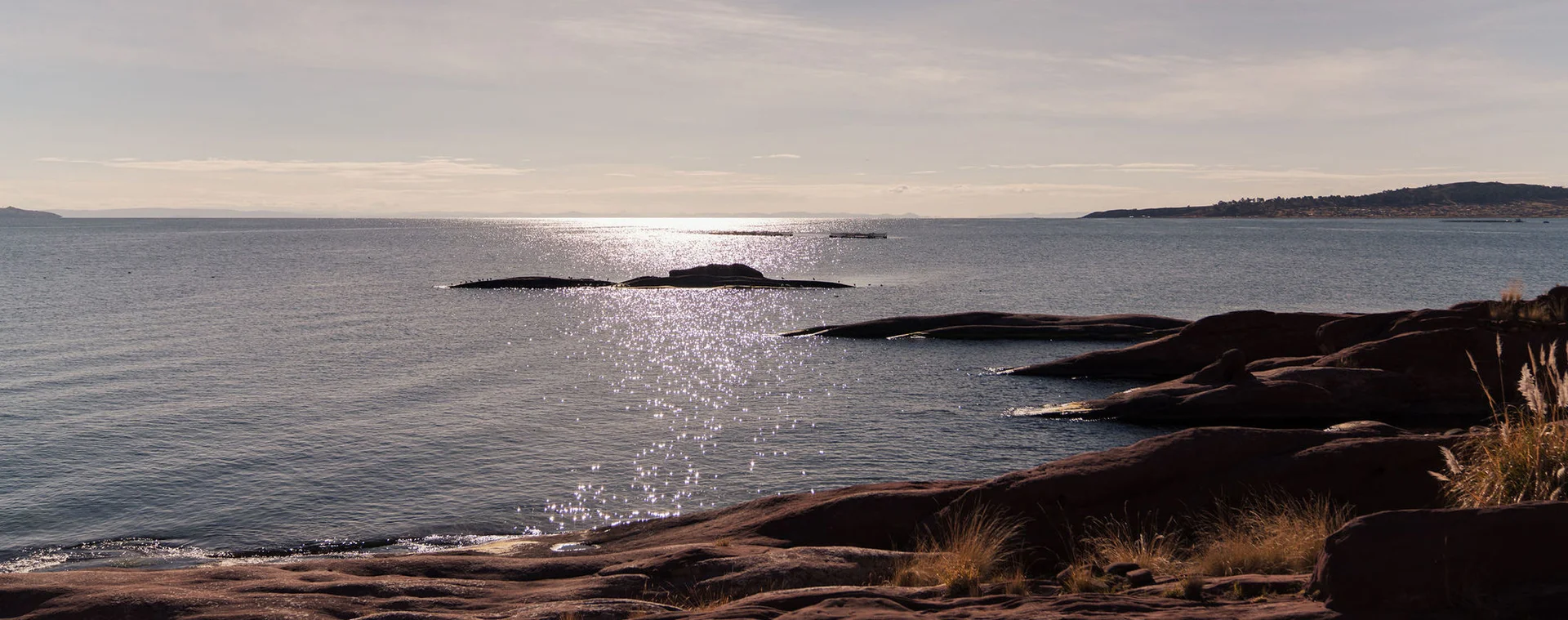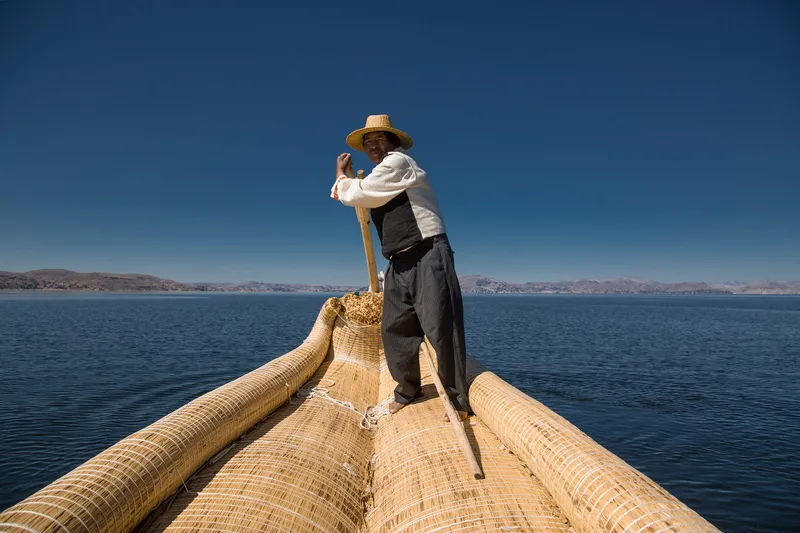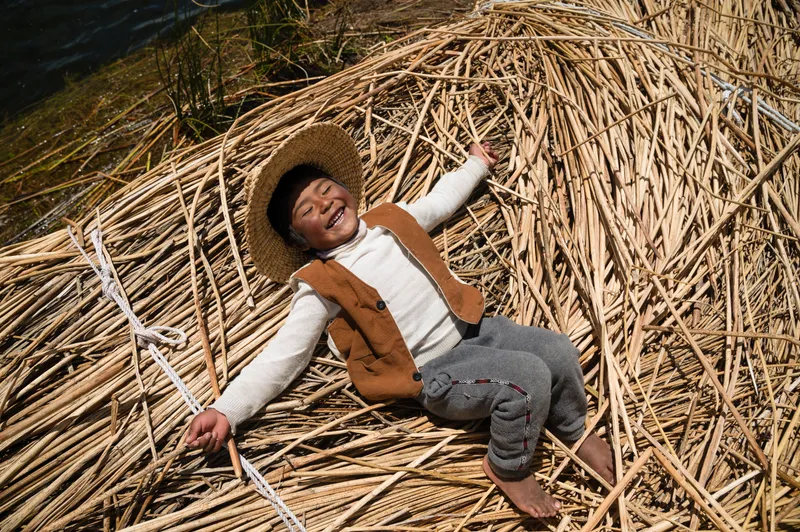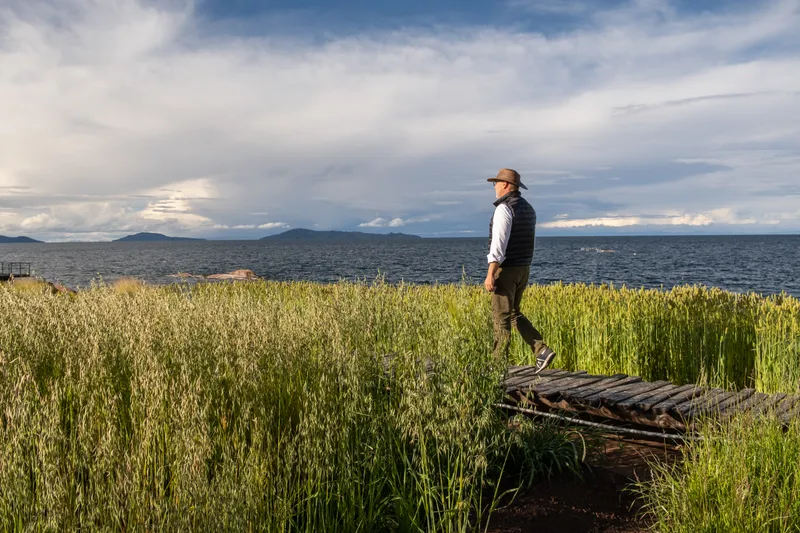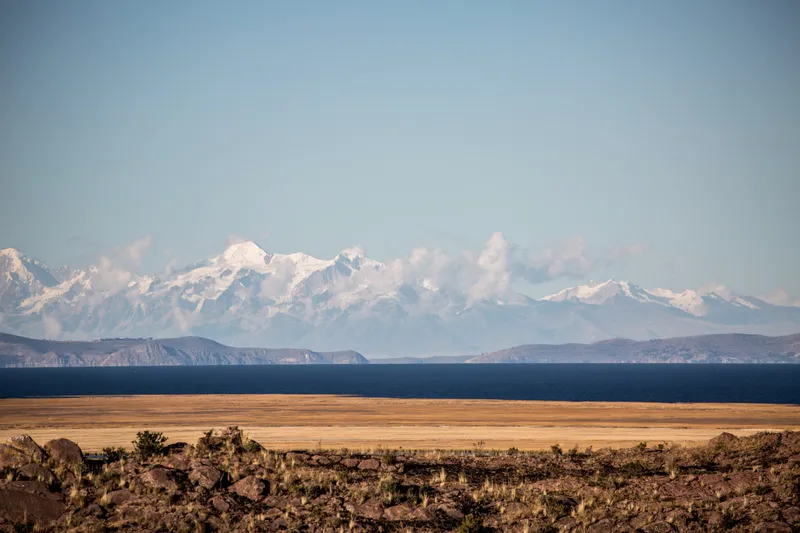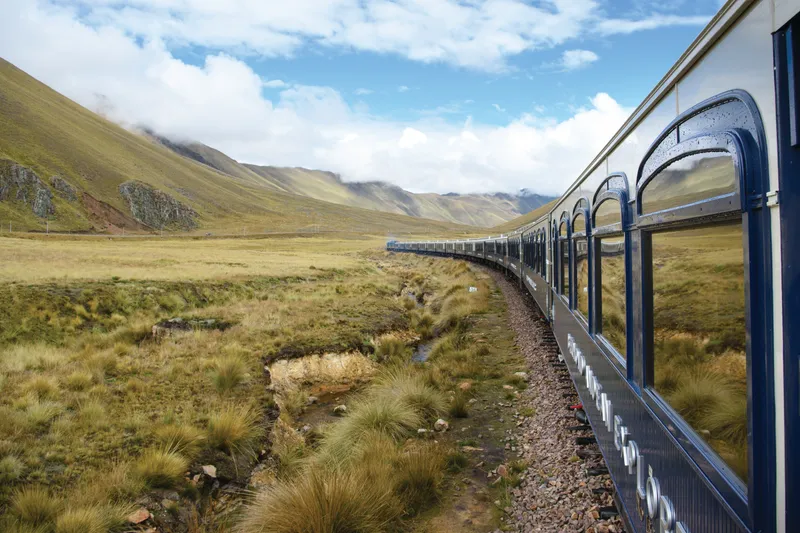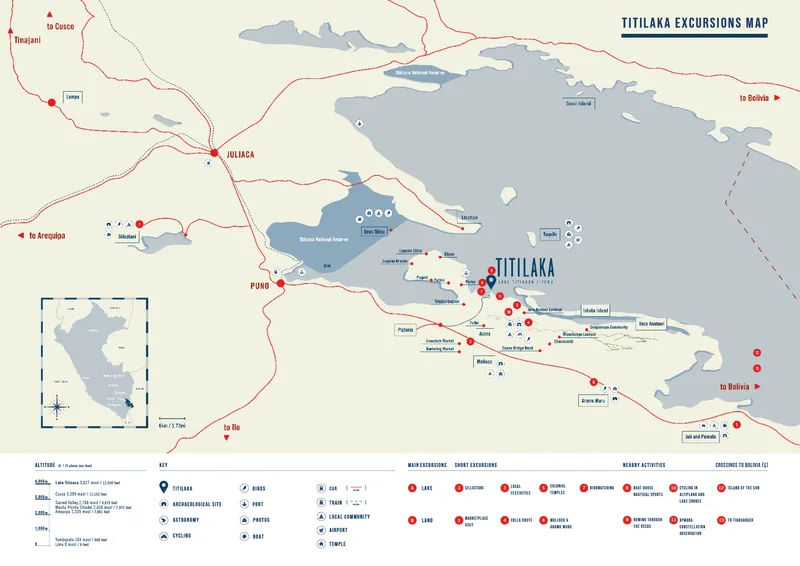The birthplace of the Incan Empire
Located on a private peninsula on Lake Titicaca, Titilaka provides travellers an enigmatic sense of peaceful solitude at nearly 4000 metres above sea level. Go deeper into this ethereal landscape to discover traditional communities and ancient ways.
Map & access
15°54'07.6"S 69°44'10.6"W
The Lake
- Stunning sunrises greet guests each morning, as the waters glow gold in reflection of the sky. Fiery sunsets are an evening tradition, accompanied by campfire nibbles, soul-warming beverages, and local folk legends. The night sky hangs low with countless stars, a heavy blanket whose incredible milky way you must see to believe.
- The lake and surrounding "altiplano", or high plateau, provide Titilaka with an expansive, sublime, and pristine natural backdrop that never fails to impress.
- The largest lake in South America and the highest navigable body of water in the world.
- It was the foundation of the most influential pre-hispanic cultures of the Andean Region. Titilaka lies at 3810 m.a.s.l. / 12500 f.a.s.l. with an average summer temperature of: 16.5°C - 3°C / 62°F - 37°F and a winter temperature of: 16°C - -2.5°C / 61°F - 27.5°F.
Tales & History
- Ancestral legend reveals that the Incas first sprung from the sacred waters of Lake Titicaca. Before them, the Aymara people worshipped and maintained a strong spiritual connection to the lake. So long before the Incas’ reign, generations of different cultures, spanning centuries and even millennia, left a rich scattering of archaeological sites and ancient monuments – some explored and several untouched – around this celestial body of water, forever worshipped as a divine gap in the earth.
Local cultures
- Titicaca forever remains a vibrant nexus of cultures, dialects, and customs. The region mainly consists of two indigenous groups who have their own languages and are culturally quite distinct: Aymara and Quechua. The mix of such cultures with colonial influences and today's contemporary Puneño influence make for an affluent cultural blend.
Nature (fauna & flora)
- Titicaca is widely recognised for its magical natural landscapes. Its wildlife stands out as the true protagonist. Many different bird species inhabit the lake and its surroundings, while the rich soil stimulates the growth of natural elements, such as quinoa and potatoes, and many other Andean grains.
